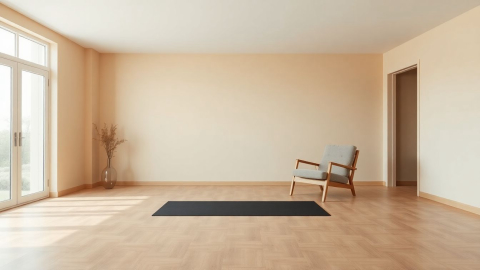Zen and the Art of Imperfect Interiors: A Satirical Guide to Japanese-Inspired Design
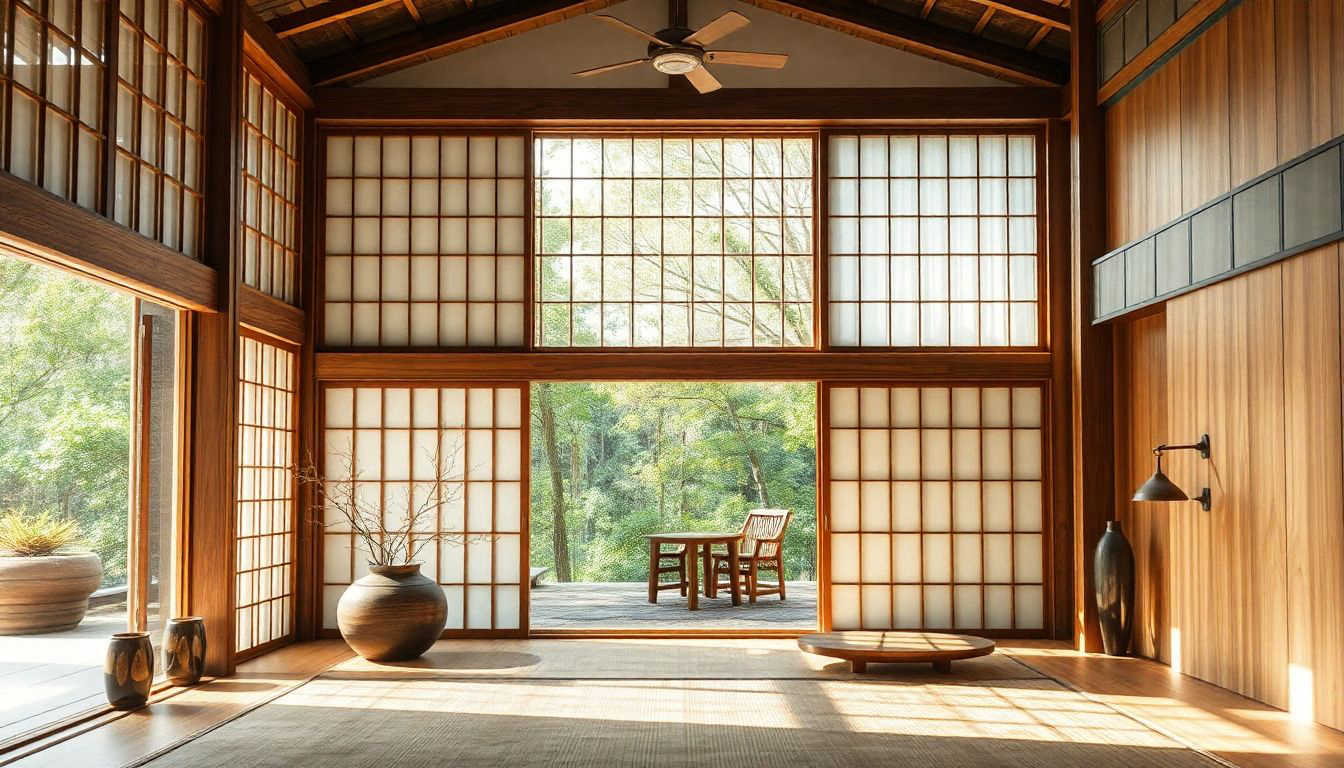
With Marie Kondo inspiring more joy than a thousand Buddhist monks, and minimalism evolving into a new form of maximalism, it's time to explore the captivating art of Japanese-inspired interiors. Set aside your meticulously curated Instagram feed and embrace the essence of wabi-sabi, for as designer Shalini Misra eloquently states, "Impermanence and transience are markers of all life, and in nature, there is no true symmetry — no two grains of sand, no two leaves." Let us immerse ourselves in the serene world of Japanese design, where imperfection is celebrated as perfection, and your living room may just attain enlightenment before you do.
The Minimalist Manifesto: Less is More, Unless It's Less Than Nothing
Welcome to the world of Japanese-inspired interiors, where the mantra is "less is more" - unless, of course, you've decluttered so much that you're left sitting on the floor, contemplating the meaning of life and wondering where all your furniture went. According to the gospel of Japandi (yes, that's a real thing), the key to achieving zen in your living space is to follow the minimalist design principles. But don't worry, this isn't your grandmother's minimalism - this is minimalism with a twist of lemon and a side of existential crisis.
As Joel Wong and Amanda Gunawan, the masterminds behind OWIU Architecture and Design studio, sagely advise, "It's about embracing wear and tear as a natural and organic process and being able to find beauty in it." So, the next time your cat shreds your curtains or your toddler draws a masterpiece on your white walls, just take a deep breath and remember - you're not living in squalor, you're embracing wabi-sabi.
But wait, there's more to this minimalist madness than just throwing out everything you own. The true art lies in creating "decluttered spaces," which is designer-speak for "where the hell did I put my keys?" Remember, in the world of Japanese-inspired design, if you can find something without having to embark on a spiritual journey, you're doing it wrong.
And let's not forget the pièce de résistance of any self-respecting Japandi home - the statement piece. As Lauren Lerner, founder and CEO of Living with Lolo, wisely notes, you should focus on "one or two main statement pieces." Because nothing says "I'm a sophisticated minimalist" quite like a giant, impractical sculpture taking up half your living room while you eat dinner on the floor.
The Natural Selection: Bringing the Outdoors In (Minus the Bugs)
If you thought bringing nature into your home meant a sad little succulent on your windowsill, think again. In the world of Japanese-inspired interiors, it's all about going full-on forest bathing in your living room. But don't worry, you don't need to install a koi pond in your kitchen (although, points for commitment if you do).
According to our design gurus, the key is to use natural materials like wood, stone, and glass. Because nothing says "I'm one with nature" quite like sitting on a rock-hard wooden chair, staring at your reflection in a floor-to-ceiling window. And if you're feeling really adventurous, why not try some "shikkui plaster"? As Joel and Amanda helpfully explain, it's "a type of Japanese plaster that is made out of seaweed fibers." Because who doesn't want their walls to smell like low tide?
But wait, there's more! To truly embrace the spirit of Japanese design, you need to "incorporate (playful) patterns with the (hand-crafted) geometrics." What does that mean, you ask? Well, imagine if your grandmother's doilies had a love child with a Rubik's Cube, and you're on the right track. And don't forget to add "elegant plants" like bonsai or bamboo. Because nothing says "I have my life together" quite like a miniature tree that requires more maintenance than a newborn.
And for those of you who think you can cheat the system with some fake plants, think again. As Naotake Moriyoshi, a Tokyo-based architect, wisely points out, "Bringing the surrounding natural environment into the room is important." So, if you live in the middle of a concrete jungle, it's time to get creative. Maybe try growing moss on your bathroom walls or turning your balcony into a vertical garden. Who needs personal space when you can have a personal jungle, right?
The Art of Imperfection: Where Mistakes Become Masterpieces
Ladies and gentlemen, prepare to throw your perfectionist tendencies out the window (but make sure it's an asymmetrical window for maximum wabi-sabi effect). In the world of Japanese-inspired interiors, imperfection isn't just tolerated - it's celebrated. It's time to embrace the cracks, the chips, and that weird stain on your carpet that you've been hiding with strategic furniture placement.
Enter the concept of wabi-sabi, the art of finding beauty in imperfection. As Shalini Misra eloquently puts it, "In interior design this means that harmony and balance are achieved through imperfection, which connects the nature in all of us to the spaces we occupy." So, the next time you accidentally put a dent in your wall, don't reach for the spackle - reach for a frame and call it art.
But wait, there's more! For those of you who can't quite let go of your perfectionist ways, there's always Kintsugi - the Japanese art of repairing broken pottery with gold. It's like plastic surgery for your dishes, but classier. And if you're feeling really adventurous, why not try it on your furniture? Nothing says "I'm embracing imperfection" quite like a coffee table held together with gold epoxy.
And let's not forget about the importance of "allowing for growth and evolution in your spaces." This isn't just designer-speak for "I'm too lazy to clean" - it's a lifestyle. So, let that pile of laundry grow into a mountain. Let your plants take over your living room. Let your kids' artwork cover every available surface. You're not messy - you're evolving.
The Zen of Confusion: When Less Becomes More Complicated
Just when you thought you had a handle on this whole Japanese-inspired interior design thing, along comes the concept of "Ma" - the appreciation of in-between space. Because apparently, it's not enough to obsess over what you put in your home; now you have to obsess over the empty spaces too. It's like playing interior design Tetris, but with more existential crises.
And let's not forget about the all-important "balanced hue lighting." According to our experts, you should "create balanced hue lighting and don't increase a sharp brightens." In other words, your living room should have the ambiance of a perpetual sunset. Because nothing says "zen" quite like stumbling over your minimalist furniture in the semi-darkness.
But the true pinnacle of Japanese-inspired interior design? That would be the concept of "borrowing scenery." As Naotake Moriyoshi explains, "In urban areas, nature may be more abstract, such as the sky, but in rural areas, it may be actual mountains or trees." So, if you live in a high-rise apartment with a view of your neighbor's brick wall, don't despair. Just squint really hard and pretend it's Mount Fuji. Voila! Instant zen.
In the end, remember the wise words of Joel and Amanda: "The feeling of Wabi-Sabi should evolve with you! It is dynamic, just like we are dynamic as people, it just needs to be personal to you." So, whether your version of Japanese-inspired design involves meticulously raked gravel gardens or just not doing the dishes for a week, embrace it. After all, in the world of wabi-sabi, there's no such thing as a mistake - only a new opportunity for enlightenment (or a really good excuse for why your house looks like a tornado hit it).
FAQ: Zen and the Art of Confused Homeowners
Q: What exactly is Wabi-Sabi?
A: Wabi-Sabi is the art of finding beauty in imperfection. It's like when you burn your toast but decide it's "artisanal charcoal bread" instead.
Q: How can I incorporate natural elements into my urban apartment?
A: Try bringing in plants, using natural materials like wood and stone, or if all else fails, just open a window and let in some pollution. It's nature's potpourri!
Q: Is it possible to have too little in a minimalist design?
A: Only if you find yourself sitting on the floor eating cereal with your hands because you decluttered all your furniture and utensils.
Q: How do I balance simplicity with functionality in my home?
A: Remember, every piece should have a purpose. If your decorative rock collection doubles as your dining chairs, you're on the right track.
Q: Can I mix Japanese-inspired design with other styles?
A: Absolutely! Just call it "fusion" and no one will question your eclectic mix of tatami mats and baroque chandeliers.
References
"The 21 ways to create Japandi style in your home" by HaticeXInterior - Link
"30 Japanese Homes that Use Metal for Interior Accents" by Claire Brodka (ArchDaily) - Link
"How to create an indoor zen garden - designer advice that will instantly make your home so much more peaceful" by Hebe Hatton (Livingetc) - Link
"What is Wabi-Sabi? Designers Explain the Art of an Imperfect Home — 'The Feeling Should Evolve With You!'" by Camille Dubuis-Welch (Livingetc) - Link
"Hiroo Residence: A Soothing Retreat in Bustling Tokyo" by Morgan Goldberg (Remodelista) - Link
More Articles

Industrial Interior Design: The Sustainable and Textural Revolution
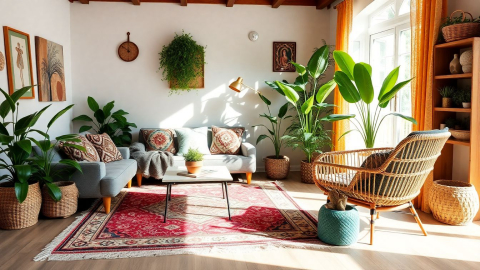
25 Bohemian Style Decorating Ideas for 2024
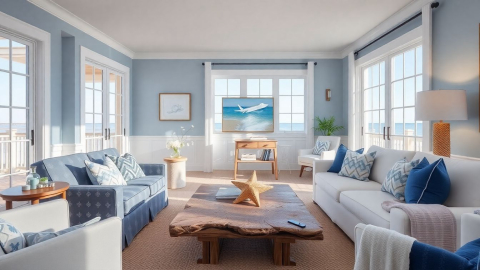
Coastal Chic: A Satirical Dive into the World of Coastal Interior Design
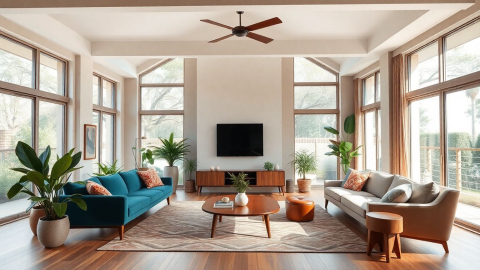
Mid-Century Modern Interior Design: A Timeless Aesthetic
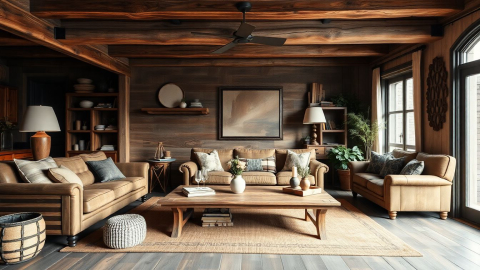
Rustic Chic: The Hilarious Trend of Pretending Your Home is a Barn
